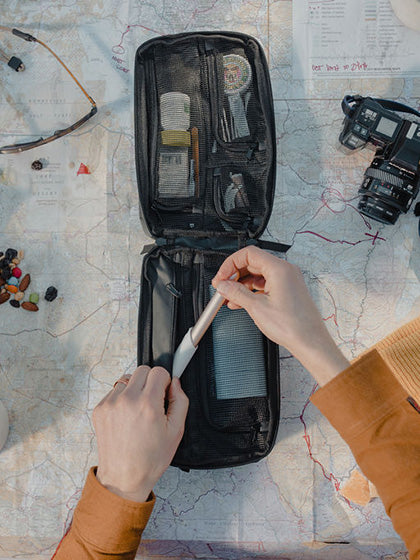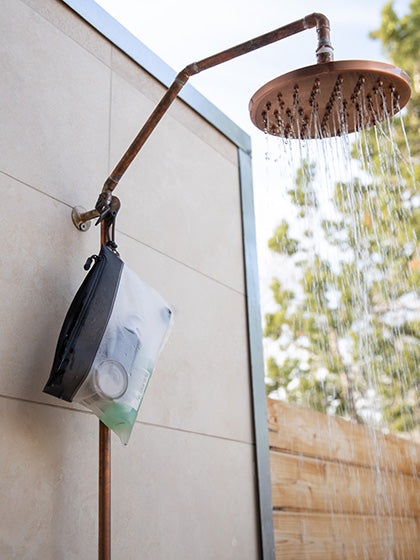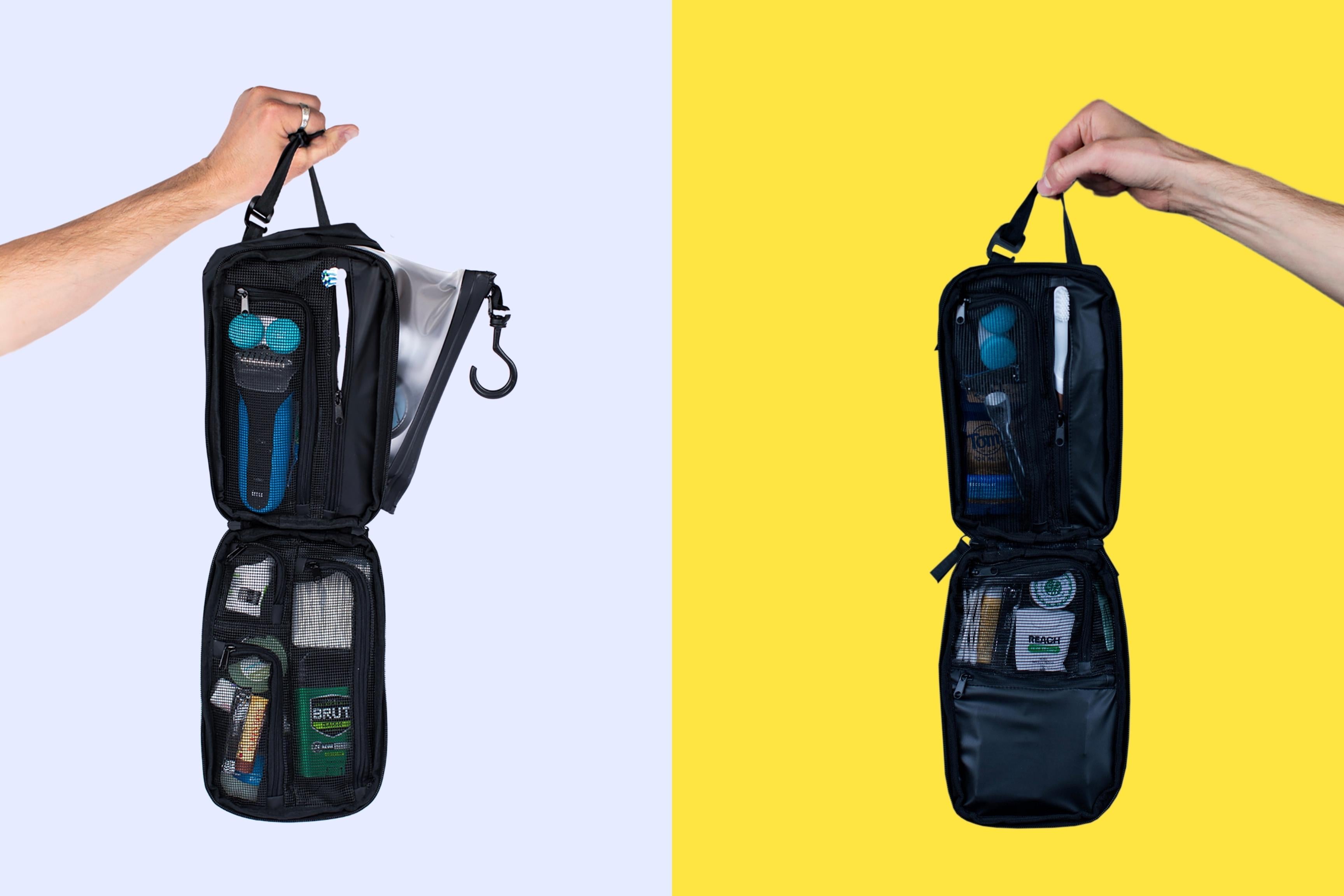Have you ever rolled your carry-on bag past those stanchions at the airport, the ones by the gate that read "Carry-On Size Check” and thought to yourself, "There's no way my bag will fit in there!"?
If so, you're not alone.
Choosing the wrong size for carry-on luggage can lead to travel headaches (and an even bigger migraine if your luggage has to be checked at the gate last minute). So, how do you avoid this travel blunder and choose the right carry-on luggage size?
What Is the Maximum Size for Carry-On Bags on Different Airlines?
The first step is to understand the permitted size for carry-on luggage, which can vary by airline.
For example, the carry-on luggage size for Delta and Jet Blue may not exceed 22-inches high by 14-inches wide by 9-inches long (22 x 14 x 9 inches). These dimensions have become pretty standard over the past decade. On the other hand, the maximum size for carry-on bags on a Frontier flight is a little more generous, coming in at 24 x 16 x 10 inches.
But before you start swooning over this extra wiggle room, it's important to remember that while some airlines allow slightly larger bag dimensions, some will carry weight restrictions.
Frontier caps this weight at 35 pounds, whereas Delta and Jet Blue have not yet specified. In other words, Frontier may allow you to pack larger while Delta and Jet Blue allow you to pack heavier.
How To Choose the Right Size for Carry-On Luggage
One way to choose the proper size of carry-on bags is to consider which airline you usually fly with and compare your favorite bag to its carry-on size restrictions.
This is where a luggage size chart comes in handy. It lists the different sizes for carry-on luggage that most airlines will allow in the cabin. So rather than checking each airline's website for size restrictions (which can get confusing after a while), the chart will have this information all in one place.
It can also shed some light on the difference between carry-on bags and personal items, which, again, can vary by airline.
Another way to choose the right size for your carry-on bag is to measure your favorite piece of luggage and then find a bag that fits within those dimensions.

Designed with Wannapik
How To Measure Your Luggage for the Right Dimensions?
To get the right size for carry-on luggage, you'll need to measure the height, width, and length of your bag.
The height is the distance from the casters to the top of the bag. Width is how wide your bag is when it's lying flat on the ground. And length refers to the distance from the front of your bag to the back.
Once you have these numbers, you can use them to find a bag that’s the right size for carry-on luggage. This can be for your preferred airline or a generic size that will be accepted by most airlines.
What If My Bag Isn't the Right Size for Carry-On Luggage?
If your bag doesn't quite fit within the carry-on size restrictions of your preferred airline, don't fret! There are a few things you can do:
- Confirm whether the airline charges a fee for checked baggage
- See if your preferred airline has a gate-check policy
- Pack a smaller bag that will fit within the carry-on size restrictions
Although it's not ideal, sometimes having to check your bag at the gate is simply unavoidable. By following these tips, you can at least avoid any extra fees and make your travel experience as smooth as possible.
In some cases, the gate attendant may announce a free bag check if overhead bins start to fill up during the boarding process. If this happens, be sure to ask the attendant if your bag will be checked through to your final destination.
What's the Difference Between a Carry-On and a Personal Item?
A carry-on bag is typically larger and can be stored in the overhead bin, while a personal item is smaller and must fit under the seat in front of you. Examples of personal items include purses, laptop bags, and small backpacks.
Some airlines may have specific dimensions for personal items as well, so it's important to check their restrictions before packing. For more information on the difference between carry-on bags and personal items, check out our article on what counts as personal items on a flight.

Let's Recap
To choose the right size for carry-on luggage, you'll need to measure the height (H), width (W), and length (L) of your bag. The standard size that most airlines will allow is 22H x 14W x 9L inches.
Investing in a carry-on bag that won't exceed these dimensions will help you avoid any baggage fees. You could also choose to pack more of your travel essentials, including your toiletry bag and travel blanket, in your backpack, which is considered a personal item by most airlines.
Lastly, if your bag doesn't quite fit within the carry-on size restrictions, remember that you have a few options, such as checking your bag at the gate (sometimes free of charge) or packing a smaller bag.
Want more tips, check out the rest of our blog!
Happy travels! 🚗💨 ✈️🧳😃✨











